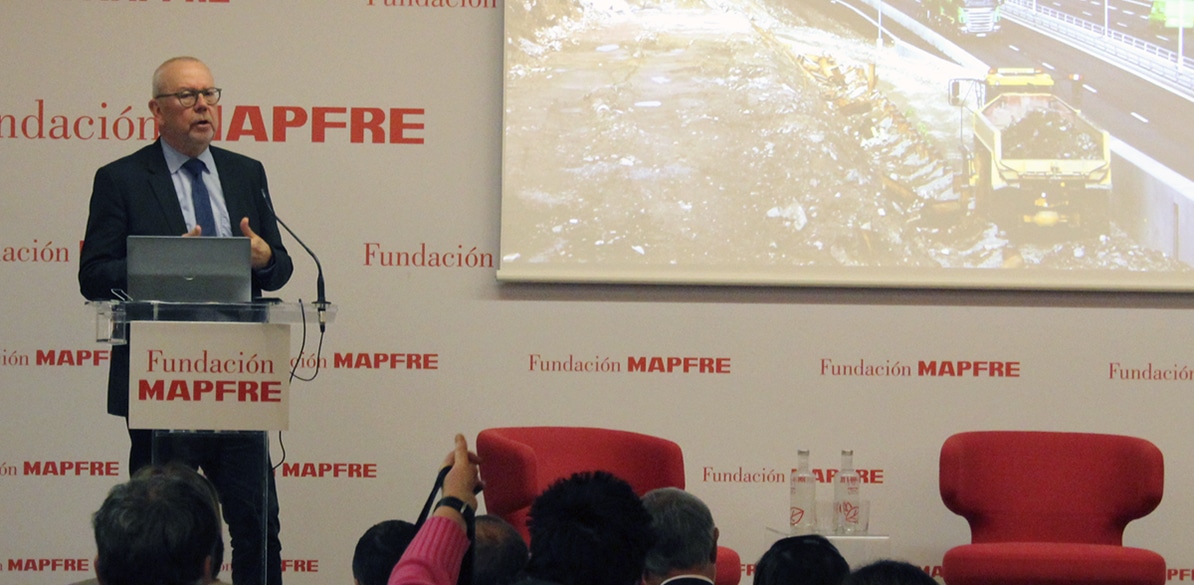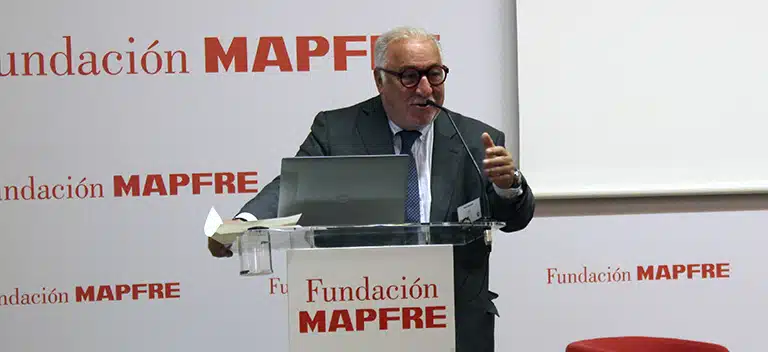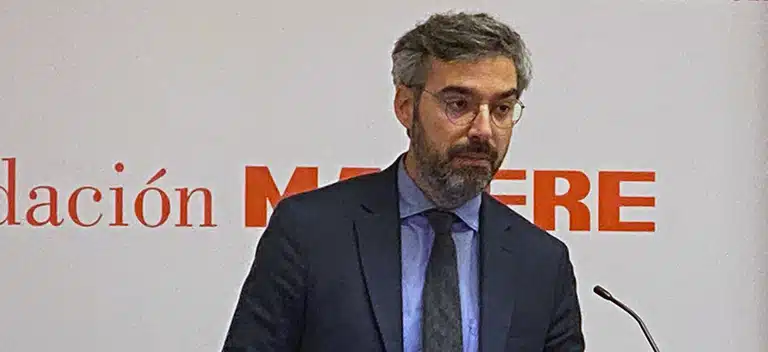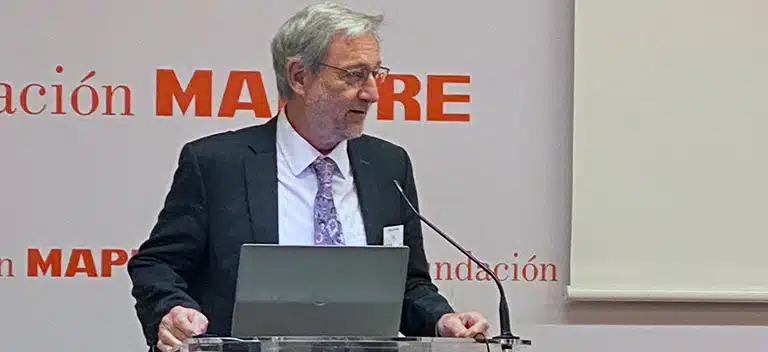Conventional roads under scrutiny
We report the main conclusions of the meeting Saving lives on rural roads

Road Safety
“The subject we are dealing with today is particularly important”. This statement by Julio Domingo Souto, General Manager of Fundación MAPFRE, kicked off a conference organized with three main objectives in mind: to analyze the accident rate on secondary roads in Spain and Europe; to propose feasible solutions; and to look at case studies of best practices from European road safety experts.
And the data can clearly be improved. Conventional roads have a high accident rate, both in Spain and in Europe. Specifically, in Spain 3 out of every 4 road traffic accidents occur precisely on this type of secondary road.
Data from the Spanish Directorate General of Traffic (DGT) confirmed the scale of the problem. Two out of every three fatalities occur on secondary roads and half of all road accidents take place on this type of road. For Pere Navarro, Director General of Traffic in Spain, “The road is not the cause of the accidents, but it can minimize their consequences.”
In this same sense, Juan Pedro Fernández Palomino, General Director of Roads from the Spanish Ministry of Transport and Sustainable Mobility, stated that “The challenge of road safety lies in the conventional network.” Carrying just 14% of traffic, these secondary roads account for 40% of fatalities. But they are still essential, as they guarantee the public’s right to mobility. The government is committed to a preventive maintenance model that will bring 1,500 km of the conventional road network up to date within three years.



Copy and paste
When it comes to making decisions about solutions to improve the accident rate on these roads, ETSC President Walter Eichendorf saw the day as an opportunity for inspiration. If good solutions have already been found, we should “copy and paste” them. In this spirit, the meeting provided an insight into the success story of Sweden’s 2+1 roads, the measures taken in the Czech Republic to avoid collisions with obstacles on the road—which are responsible for most accidents—and the specific measures taken in Austria to protect motorcyclists on secondary roads.
Tailor-made measures
But in the field of conventional roads, this “copy and paste” idea is not that easy to implement. This was the view of María del Carmen Plaza, Director General of Road Safety and Road Sustainability in the Community of Madrid: “In the Community of Madrid, 60% of accidents are concentrated in the conventional network. But the characteristics are different in almost every stretch.” When it comes to implementing solutions “what is missing are tailor-made measures”, she said, “we need innovative solutions. And we need to run pilot projects to see if the actions applied are effective, since you have to customize the measures and establish adaptation criteria.”
Conventional roads are a priority
For Pedro Tomás Martínez, coordinator N29 in the General Secretariat of Infrastructures at the Ministry of Transport and Mobility, conventional roads are a priority, as their accident rate is four times higher than that of high-capacity roads and they account for 50% of fatalities. But what should be done? What funding is needed? How soon can improvement measures be implemented? It is necessary to improve technical knowledge in accident investigation and understand the genesis of the accident. “We must have better tools for improving solutions”, he said in his speech.
Data for life
Experts agree that working with data from connected vehicles provides an immediacy that serves to create action protocols and support decision making. In addition, when an action is taken on a road, the data received from the connected cars makes it possible to determine how the driver reacts to the measure implemented and analyze whether the desired objective is achieved. For Jesús Monclús, director of the Accident Prevention and Road Safety Area at Fundación MAPFRE, all this information is “data for life”.
Two essential reports
Two reports were presented at the conference:
- Reducing Road Deaths on Rural Roads (PIN Flash 46), by the ETSC, highlights the need for national governments to make significant investments to improve rural road safety in order to achieve the EU’s collective target of halving road deaths by 2030. The study indicates that in 2022, about 10,000 people were killed on non-motorway rural roads in the EU, representing about half of all road deaths.
Jenny Carson, researcher and author of the study, pointed out that there are some recurring causes behind these accidents, such as speeding. “The speed limit on roads is sometimes not appropriate for the design or layout of the road”, she explained. “Also, on rural roads, there are many different vehicles. There are heavy vehicles, cars, cyclists and sometimes pedestrians. So there is enormous potential for conflict between different types of users all on the same road.”
As for the most urgent measures to curb this road accident rate, the head of the ETSC points out that these roads need to be examined and assessed, it should be ascertained where the collisions are occurring and then measures should be taken to solve the problems.
In his presentation of this report produced by the Spanish Road Association and Fundación MAPFRE, Jesús Monclús stated: “Today it is time to talk about roads, with courage, vehemence and a certain urgency. We are at a crossroads in the field of road investments. This is no time for timidity, it is the time to demand greater investment.”
The study makes it possible to quantify the investment needed to improve safety on this type of road, identify effective solutions and analyze current challenges. Among the most striking conclusions of the study, Monclús pointed out that, with an investment of 1.8 billion euros allocated to improving these roads, no less than 300 deaths a year and more than 800 serious injuries could be prevented.
“This may appear to be a major investment, but it has an unquestionable socioeconomic return in a very short period of time, between 2 and 4 years. Prevention is the most profitable investment, but reducing the number of fatalities and serious casualties to a minimum at zero cost is not realistic. Not investing, or underinvesting, means “thousands of tragedies a year”, he added.
Keeping Vision Zero in mind
ETSC Executive Director Antonio Avenoso stressed the importance of keeping Vision Zero in mind, in other words, ensuring that in the long term no one is killed or seriously injured on Europe’s roads. “It is important that we have this vision, it is important that we have these targets, but we also have to remember that we need effective measures, because a target without measures is like a tiger without teeth, it doesn’t do any damage, it does nothing at all. We really need to take substantial action across the board. We need to improve general road safety management, we need to improve vehicles, we need to improve infrastructure, we need to improve behavior, we need to improve post-accident care”, he remarked.
As Julio Domingo Souto stated in his speech at the beginning of the day, “Goal zero should be the only ethically justifiable target.”
